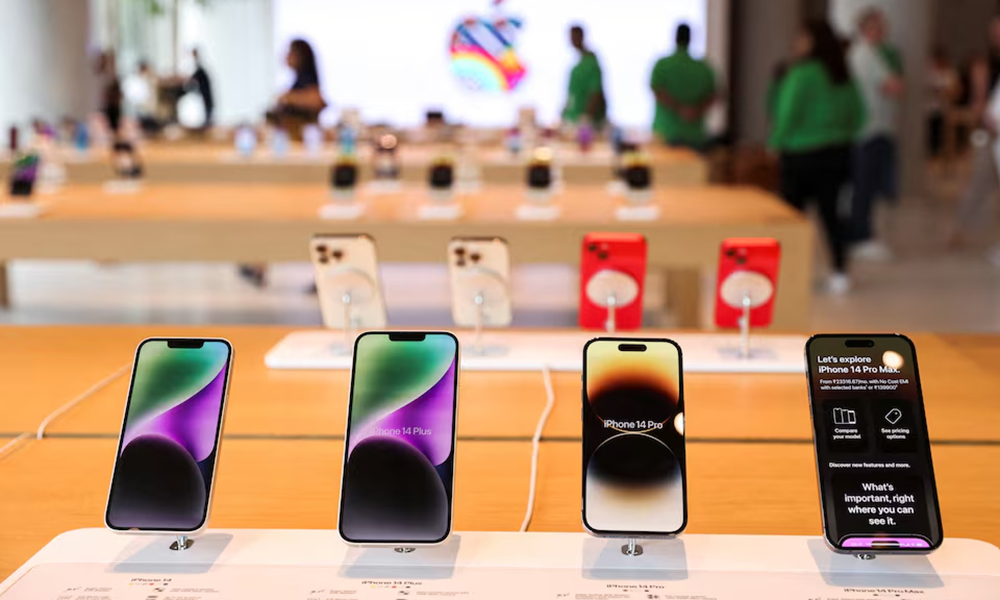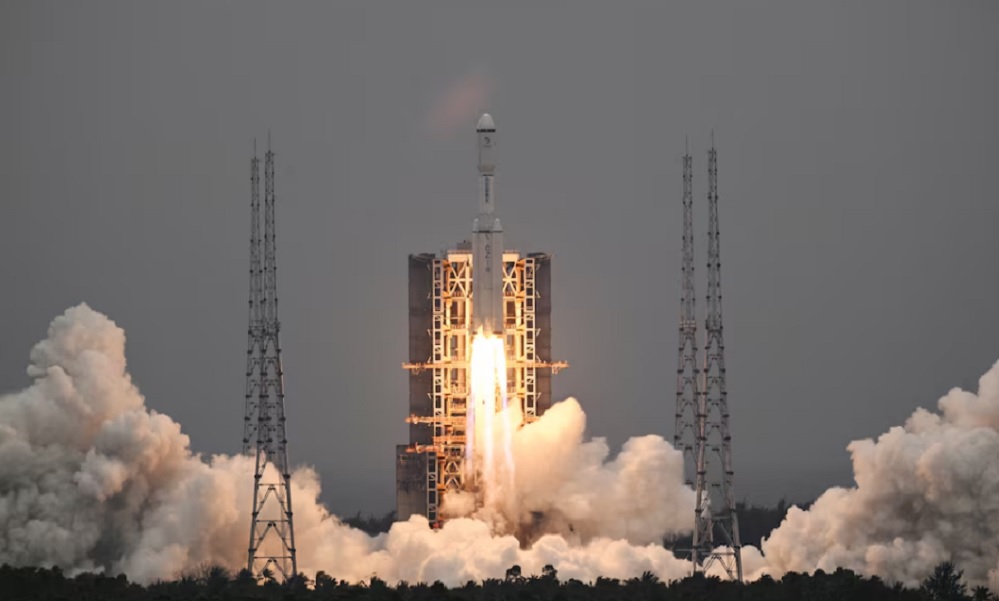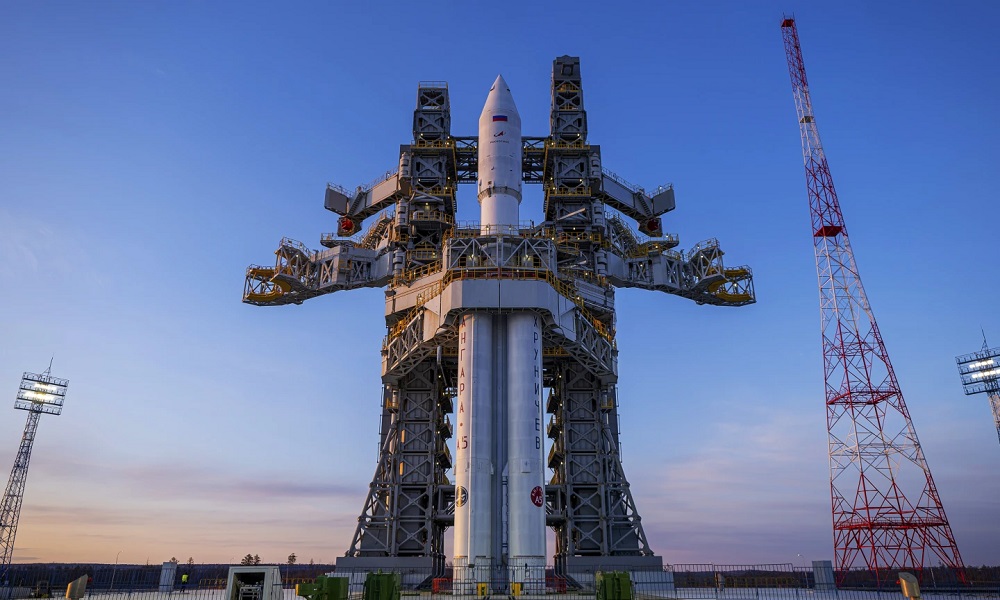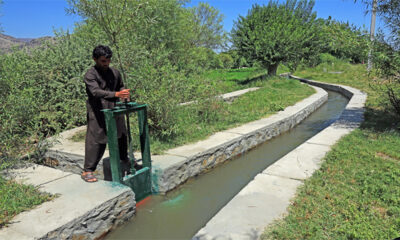Science & Technology
Ferrari says going electric means ‘even more unique’ cars

Electric and hybrid models should make up 80% of Ferrari’s (RACE.MI) sales by 2030, the luxury carmaker told investors on Thursday, vowing to produce “even more unique” cars as it leans on partners to make the costly shift to zero-emission driving.
“Everything we do will always focus on being distinctively Ferrari,” chairman John Elkann said as the company unveiled its new business plan. Electrification “will allow us to make even more unique cars.”
To reduce investments, Ferrari will use suppliers for components or software that are not crucial, such as an operating system, Chief Executive Benedetto Vigna said.
Like other sports carmakers, Ferrari’s challenge goes beyond just investing in electric models to deliver high performance – today’s electric vehicle (EV) batteries cannot match combustion engine sports cars’ sustained power.
Like its rivals, Ferrari also sells an emotional experience to wealthy customers centred on the throaty roar of its powerful engines. As it goes electric, Ferrari must ensure its high-net worth customers and investors are along for the ride.
Standing out in the multitude of EVs coming to market that can all accelerate quickly could be tough for the Italian carmaker, whose cars start at around 210,000 euros ($219,282.00).
In the meantime, Ferrari will unveil its first ever sport-utility vehicle – powered by its gas-guzzling trademark 12-cylinder engine – this September.
Vigna confirmed Ferrari will launch its first electric model in 2025, one of 15 new models between 2023 and 2026.
Ferrari expects fully-electric cars will make up 5% of sales in 2025 and 40% in 2030. Hybrid models should rise to 55% of sales in 2025 from 20% in 2021, before dropping to 40% in 2030.
Vigna said Ferrari would develop its own electric motors, inverters and battery modules on a new assembly line at its plant in Maranello, Italy, while outsourcing non-core components.
To save money Ferrari will not develop an operating system for EVs. In contrast, other automakers, including Tesla (TSLA.O) and Mercedes (MBGn.DE), say proprietary operating systems to run cars, manage wireless upgrades and collect data on driver habits and preferences are crucial.
“I will never build a Ferrari operating system, I would be foolish,” Vigna told investors. “You have to focus on the areas where you can be the best.”
Ferrari is working with four partners in Europe and Asia on battery components to research the next generation of high energy density solid state batteries.
Ferrari said it will invest 4.4 billion euros by 2026, while delivering core earnings of 2.5-2.7 billion euros by that year. Ferrari’s current guidance for 2022 is for adjusted core earnings of 1.65-1.70 billion euros.
The carmaker expects cumulated free cash flow of 4.6-4.9 billion euros from 2022 to 2026.
In a client note Kepler Cheuvreux analyst Thomas Besson said Ferrari’s financial forecasts sent a “clear bullish signal,” yet noted executives avoided questions about production volumes.
“But the direction is clear,” Besson wrote. “Electrification is required but will not change the DNA of the company and its products.”
Science & Technology
Apple loses top phonemaker spot to Samsung as iPhone shipments drop, IDC says

Apple’s (AAPL.O), opens new tab smartphone shipments dropped about 10% in the first quarter of 2024, hurt by intensifying competition by Android smartphone makers aiming for the top spot, data from research firm IDC showed on Sunday.
Global smartphone shipments increased 7.8% to 289.4 million units during January-March, with Samsung (005930.KS), opens new tab, at 20.8% market share, clinching the top phonemaker spot from Apple, Reuters reported.
The iPhone-maker’s steep sales decline comes after its strong performance in the December quarter when it overtook Samsung as the world’s No.1 phone maker. It’s back to the second spot, with 17.3% market share, as Chinese brands such as Huawei gain market share.
Xiaomi, one of China’s top smartphone makers, occupied the third position with a market share of 14.1% during the first quarter, read the report.
South Korea’s Samsung, which launched its latest flagship smartphone lineup – Galaxy S24 series – in the beginning of the year, shipped more than 60 million phones during the period.
Global sales of Galaxy S24 smartphones jumped 8%, compared to last year’s Galaxy S23 series during their first three weeks of availability, data provider Counterpoint previously said.
In the first quarter, Apple shipped 50.1 million iPhones, down from 55.4 million units it shipped same period last year, according to IDC.
Apple’s smartphone shipments in China shrank 2.1% in the final quarter of 2023 from a year earlier.
The drop underscores the challenges facing the U.S. firm in its third biggest market, as some Chinese companies and government agencies limit employees’ use of Apple devices, a measure that mirrors U.S. government restrictions on Chinese apps on security grounds.
The Cupertino, California-based company in June will hold its Worldwide Developers Conference (WWDC), where it will highlight updates to the software powering iPhones, iPads, and other Apple devices.
Investors are closely watching for updates on artificial intelligence development at Apple, which has so far spoken little about incorporating the AI technology into its devices. The company earlier this year lost the crown as the world’s most valuable company to Microsoft (MSFT.O), opens new tab, Reuters reported.
Science & Technology
China launch of relay satellite Queqiao-2 for lunar probe mission successful

China National Space Administration (CNSA) said on Friday its launch of a key signal relay satellite was a “complete success” and it would serve as the communication bridge for its future lunar probe missions for years to come, state media reported.
China launched the satellite Queqiao-2, which was named after a mythological bridge made of magpies, and two miniature satellites, Tiandu-1 and Tiandu-2, on March 20.
Queqiao-2 will be used as a communications bridge between the ground operations on earth and upcoming lunar probe missions on the far side of the moon until at least 2030.
The moon’s near side always faces earth. That means data transfers from the far side are impossible because there is no direct line of sight.
Queqiao-2 researcher and developer Xiong Liang described the satellite as “the main switch” of the whole fourth phase of lunar missions, according to state television CCTV.
“Only when the main switch is flipped on, all the communications can kick off,” Xiong said.
Queqiao-2 will orbit the moon and relay signals to and from the Chang’e-6 mission, which expected to be launched in May. The robotic Chang’e-6 probe will seek to retrieve samples from an ancient basin, acquiring lunar material from the moon’s hidden side for the first time.
Queqiao-2 will also be used as a relay platform for the Chang’e-7 lunar mission in 2026 and the Chang’e-8 mission in 2028.
The functions and performance of Queqiao-2 met mission requirements and it will be able to provide relay communication services for China’s lunar exploration projects and future lunar missions for China and other countries, said the CNSA, according to CCTV.
Queqiao-2 entered its targeted elliptical orbit on April 2 after a correction midway, near-moon braking and orbital manoeuvre around the moon, CNSA said.
The satellite has successfully communicated with Chang’e 4, which was the first spacecraft to perform a soft landing on the far side of the moon and is still carrying out its exploration mission. It also communicated with the Chang’e-6 probe while it is still on the ground earlier this month.
The successful launch of Queqiao-2 comes after the failed launch of another lunar spacecraft DRO-A/B satellites, which was intended to enter the moon’s distant retrograde orbit (DRO).
China has not released any information on whether or not the satellites can be retrieved.
(Reuters)
Science & Technology
Russia aborts planned test launch of new heavy-lift space rocket

Russian space officials on Tuesday aborted the test launch of a new heavy-lift rocket from its far-eastern launch pad.
The Angara-A5 rocket was scheduled to lift off from the Vostochny space launch facility at 0900 GMT Tuesday, but the launch was aborted two minutes before, AP reported.
Yuri Borisov, head of Roscosmos state space corporation, said the automatic safety system canceled the launch after registering a flaw in the oxidizer tank pressurization system.
He said the next launch attempt was set for Wednesday.
Tuesday’s launch was to be the fourth for the Angara-A5, a heavy-lift version of the new Angara family of rockets that has been developed to replace the Soviet-designed Proton rockets.
-

 Sport5 days ago
Sport5 days agoACL draw to be broadcast live on ATN channels
-

 Regional5 days ago
Regional5 days agoIRGC chief warns of harsher response if Israel attacks Iran
-

 Sport3 days ago
Sport3 days agoACL fever grows as fixtures finalized
-

 Regional5 days ago
Regional5 days agoIran launches retaliatory attack on Israel with hundreds of drones, missiles
-

 Latest News5 days ago
Latest News5 days agoContact group on Afghanistan hits roadblock over Pakistan’s gripe with India
-

 Sport5 days ago
Sport5 days agoHetmyer powers Rajasthan win in low-scoring IPL thriller
-

 World5 days ago
World5 days agoUN Security Council to meet Sunday on Iran attack
-

 World4 days ago
World4 days agoUS will not take part in any Israeli retaliatory action against Iran
























